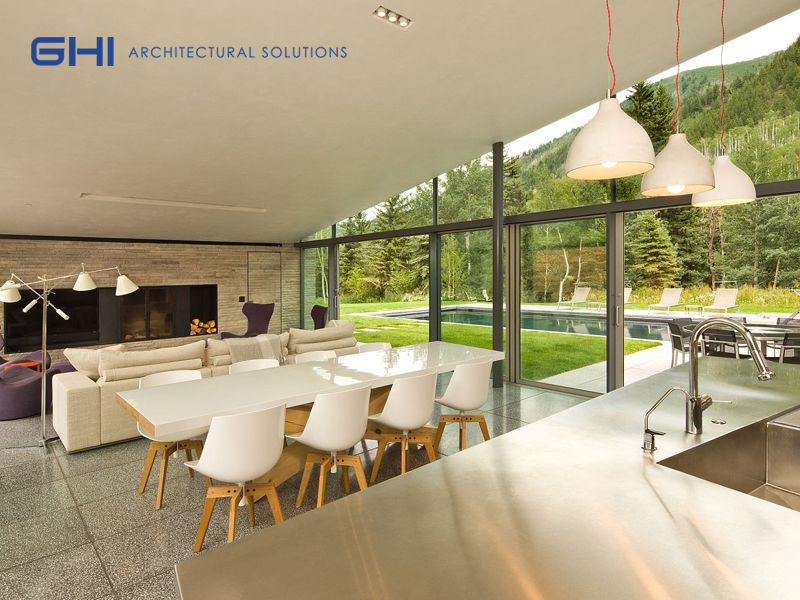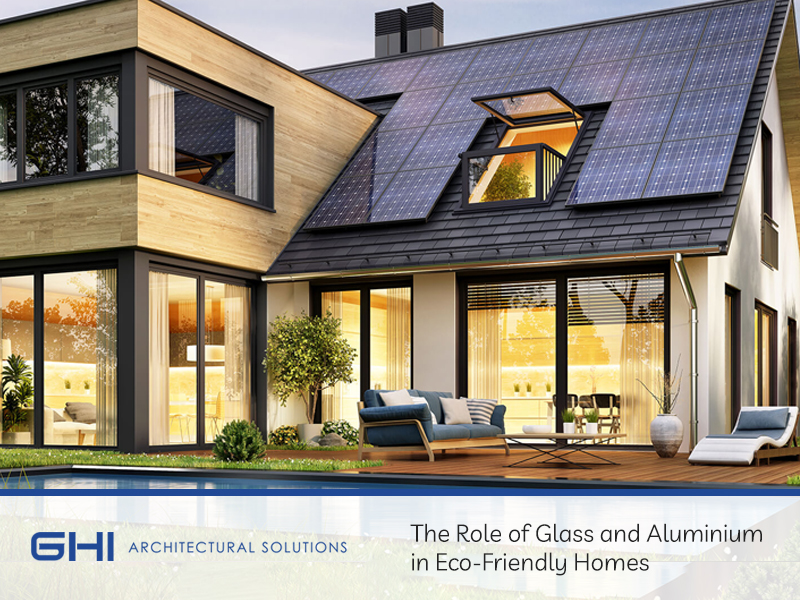The Role of Glass and Aluminium in Eco-Friendly Homes
We’re all well-versed in the reduce, reuse, recycle mantra and it’s heartwarming to see so many people doing their bit, even in a small way for this worthy cause. Many individuals are taking the next step in the fight against climate change when renovating or building as they look into creating eco-friendly homes.
Eco-friendly homes, or green homes as they’re also known, take many forms and really are an exciting project to undertake.
Defining Eco-Friendly Homes

“An Eco-house (or Eco-home) is an environmentally low-impact home designed and built using materials and technology that reduces its carbon footprint and lowers its energy needs. Eco-homes are measured in multiple ways meeting sustainability needs such as water conversation, reducing wastes through reusing and recycling materials, controlling pollution to stop global warming, energy generation and conservations, and decreasing CO2 emissions.” (Source)
The goal of a green building is for it to use less energy, be easier on the environment, and healthier for the occupants than what has come before. So even if we can’t satisfy all the criteria of an eco-friendly building, we can still try to satisfy some of them.
We can’t help you with rainwater harvesting, composting toilets, or wind turbines, but we can certainly offer our input on the role of glass and aluminium in an eco-friendly home.
Glass in a green house
Glass is a popular choice of material for green homes, and with good reason.
As a beautifully transparent product, glass allows natural light into a building. The warmth of the sunlight reduces heating bills in cooler climates as well as the need for artificial light sources during the day.
In warmer climates, certain types of glass are available which will reflect the heat to maintain an optimal internal temperature, thus reducing the need for air-conditioning and ventilation.
One source comments on the energy savings on these two elements alone: “The major areas of energy consumption in buildings are heating, ventilation, and air conditioning—35% of total building energy; lighting—11%; major appliances (water heating, refrigerators and freezers, dryers)—18% with the remaining 36% in miscellaneous areas including electronics.”
With our energy costs creeping up here in South Africa, we have to agree that any saving will be welcome. This, coupled with the fact that we’re contributing to a healthier planet, are both excellent reasons to make good use of glass.
Wise homeowners also realise the future value of these energy savings. Consider this comment from Green Building Solutions company, Econaur:
“When used properly, glasses can reduce the total energy consumption by anywhere between 8-10 percent. Hence, the accrued benefits of using glasses keep growing over the years.
“Furthermore, it is not just the recurring savings but also the reduction in capex because of the lower energy loads required for conditioning the building that further augments the versatile nature of these glasses.
“Typically, the heat gained or lost through glazing in a normal building is anywhere between 40-50 percent and using the right type of glass can bring down the energy consumption by 30-40 percent. The incremental cost for high-performance glazing can be recovered in a time span of 3-4 years.”
Aluminium in eco-friendly homes
If you’re thinking green, then aluminium is an excellent option; being strong, light, and durable on top of being considered one of the most sustainable and energy-efficient materials used in today’s buildings.
Did you know:
“A study from Delft University showed that the end-of-life collection rates for aluminium in the building sector were found to vary between 92-98%, demonstrating aluminium’s vital role in the pursuit of sustainability in construction. The deconstruction of the old Wembley Stadium achieved a 96% recovery rate – the 4% loss was due to handles, hinges and other similar items not made from aluminium.” (Source)
This lightweight product has replaced steel in many areas of construction and has allowed architects to deliver some incredibly daring and beautifully light, airy structures.
From a practical perspective, aluminium works well with glass in maintaining an energy-efficient home.
How so?
Unlike wood, steel, and even some uPVC products, aluminium is resistant to corrosion, warping and flexing. This thermal efficiency is exactly what wise homeowners want for durable windows and door frames.
In Conclusion
Glass is a recyclable, low-impact product which plays a huge role in the quality of indoor spaces and offers significant energy savings.
Aluminium is a hardy, recyclable material which can be reused indefinitely without compromising the final product.
If an eco-friendly home is what you’re looking for, then it’s clear that a glass and aluminium mix is going to offer a wonderfully useful, green, and stunning result.
How do we know that we’re getting the very best product though, especially with so many building products on the market? That’s a valid question and one which requires that you do a little homework to ensure that you’re working with a reliable company with an excellent product.
The quality of our products speaks for themselves, but if you’d like to chat with a member of our team for more information on creating your eco-friendly home, please feel free to call us on 011 608 2800.

